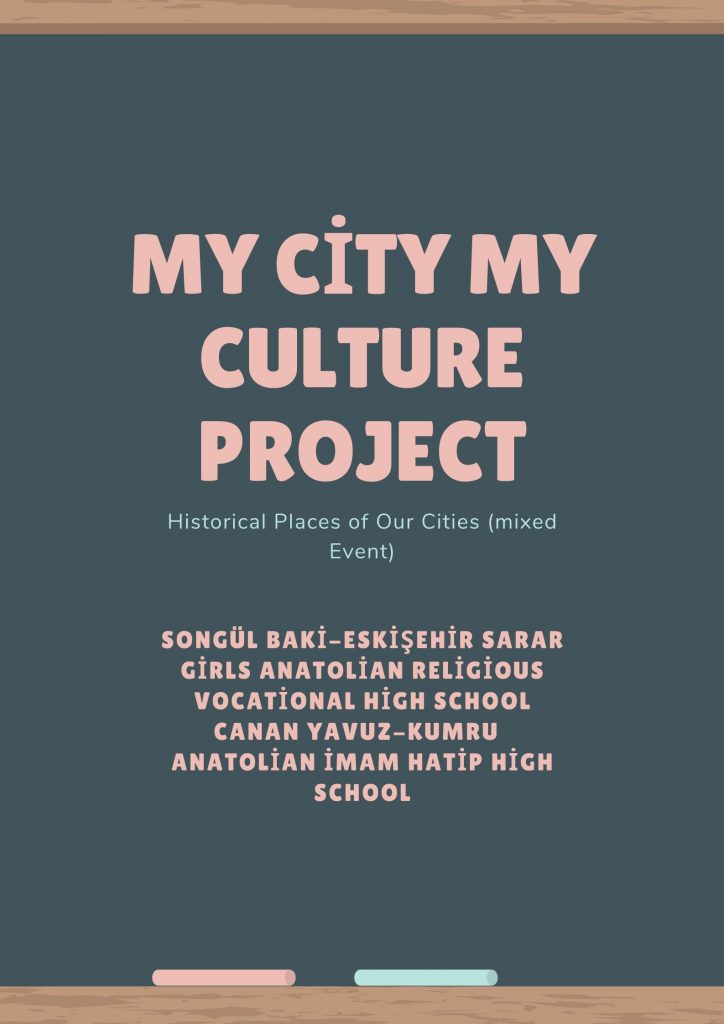
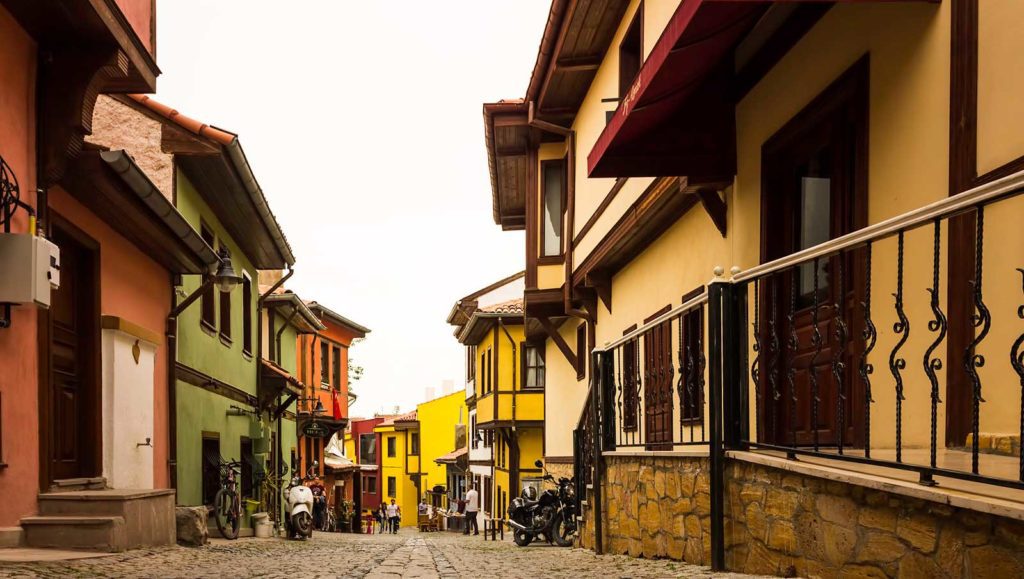
ESKİŞEHİR
Eskişehir is located on the Porsuk Stream, the longest branch of the Sakarya River.
Eskişehir has 14 districts.
This beautiful city is home to many local and foreign tourists with its
historical and touristic places.
The only Wax Sculpture Museum,
Odunpazarı Houses,Meerschaum Museum and
Han Antique City in our country are the most visited places.
There are also many historical cities, tombs and buildings in the city.
A rich historical tour awaits visitors to the city.
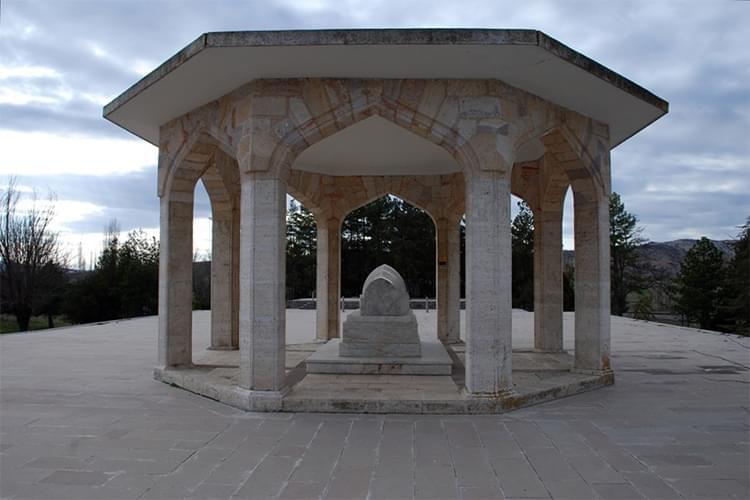
Yunus Emre Tomb
The tomb of Yunus Emre, who is considered one of
the most important poets of Turkish Literature, is located
in Mihalıççık District.
In the tomb, which has a large area,
there is a house showing the lifestyles
of the period, many tombs, fountains and mosques.
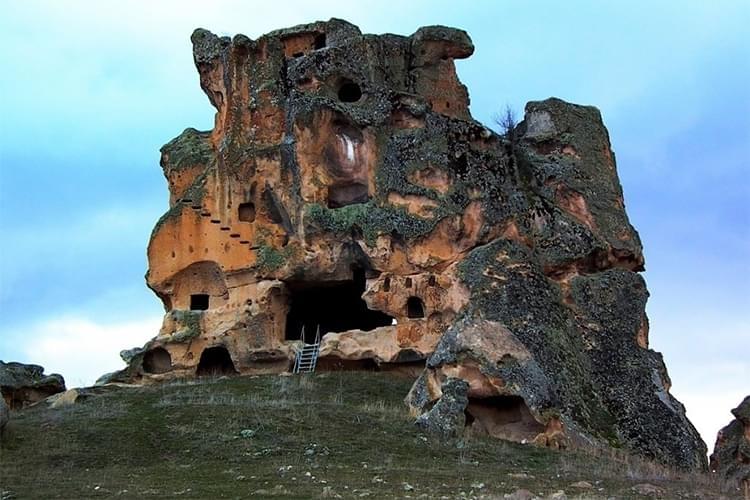
Doganli Castle
It is a castle located in Çukurça Village, south of Seyitgazi District.
The most important feature of the castle is that
it was built by carving the natural rock.
It consists of seven floors.There are also chapels and storage areas in the castle.
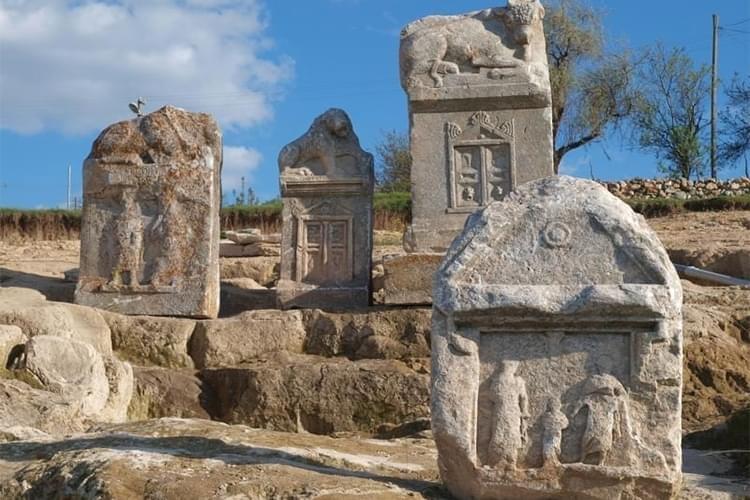
Han Ancient City
It is an ancient city located in Han District, south of Eskişehir.
It is one of the most important archaeological excavation sites in the region.
It consists of many underground galleries and different corridors connecting them.
The Burial Chamber, which was built as three floors,
is the most interesting point.
There are leaf, pinwheel, rosette, bow and lozenge motifs on the ceilings and walls of the city.
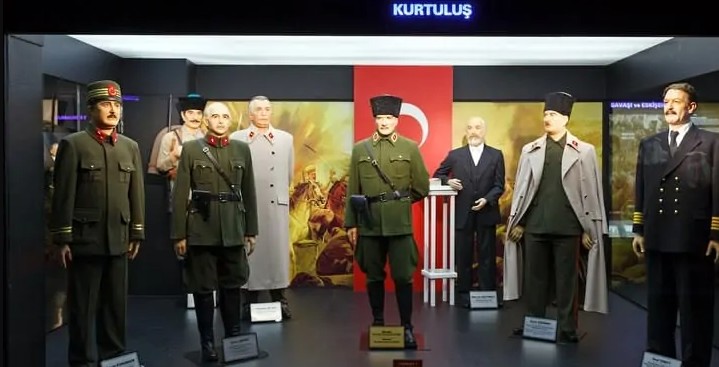
Wax Sculptures Museum
Wax Sculptures Museum is located in the area where Odunpazarı Houses are located.
In this museum, there are statues of famous people in the world and in our country.
Sculptures of new people are added to the museum every year.
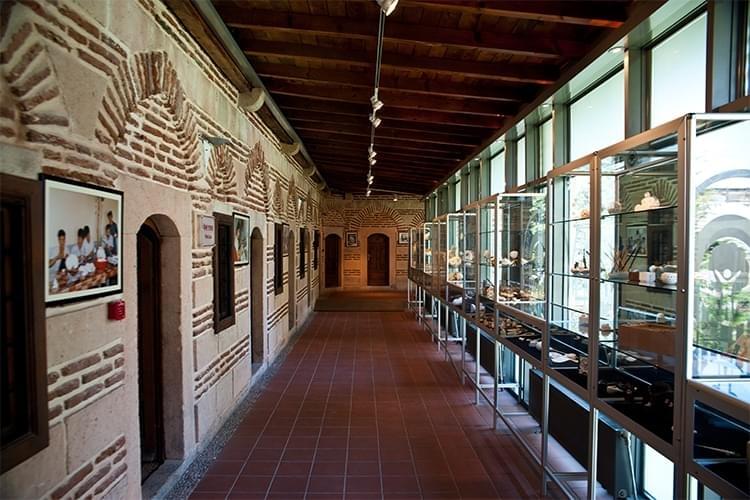
Meerschaum Museum
It is a museum created for the Meerschaum, which was mined in Eskişehir.
Meerschaum Museum is located in Kurşunlu Complex.
There are more than 400 works in the museum.
All of these works were created by 60 different artists.
When visiting the museum, detailed information about the Meerschaum is presented to the visitors.
ORDU
History of Ordu Province
Thehistory of thefirstknownsettlements on theterritory of Ordu provincedatesbackto BC. VII. Itgoesbacktothecentury. Thefirstknownsettlement in thecitycenter is Bozukkale (Kotyora), nexttotheKirazlimanıCemetery. B.C. IV. Xenophon, theGreekcommander, whostoppedbyKotyorawhilereturningfromthewarfromtheIraniansides in thecentury, statesthattheyencountered a settledtribe here andcontinued on theirwayafterstayingfor 45 days.
Kotyorawas a smallcolony. This is BC. II. Itwasevacuatedduringthereign of Pontus King I. Farnak in the 16th centuryanditspeopleweretransferredto Giresun.B.C. From 675 onwards, the Central andEastern Black SeaRegion, where Ordu waslocated, wasdominatedbyCimmerians, Milesians, Persians, Macedonian Alexander andtheircommanders,respectively. Afterthat, the Pontus State (280 BC-63 AD), whichlivedforabout 3.5 centuries, dominatedtheregion.
Contrarytosomehistorianswho say that KotyorameansMountainFoot in Greek, Prof. Dr. Necati DEMİR claimsthattheorigin of thewordKotyora is Kut Region, Kut Turkslived here, andthis name waslatertransformed.Thesamescientiststates in his articlesthatthe name Bolaman is not a wordfromPontpolemenyum, but a wordfrom Balaban Turks.
Halips, one of thekaimsliving in the Ordu region, wentforward in miningandprocessedsomemines, especiallytheiron mine, in the Ordu region.Accordingtothework of theGreekhistorianXenophon (born in BC 431), “The Return of theTens”, in theMiddleandEastern Black Searegion (of coursealso in Ordu) BC. In 400 BC, non-Greektribessuch as Kolkhs, Driller, Mossinoiks, HalipsandTibarenslived.
ThehistoricalCıngırtArchaeologicalSettlement in thecenter of Fatsa, BC. Therearerecordsthattheconcubines of thePontPolemeniumkings, whoruled in thisgeography, were a recreationarea.Likewise, it is knownthatthefamous Cape Yason, locatedbytheseawithintheborders of Persembedistrict, wasthescene of humansettlementuntilveryancienttimes, andthisregion is one of theplaceswheretheworld-famousArgonautLegendtakesplace.13 km fromthecitycenter. Thehistory of thehistorical Board Kaya Campus, which is far awayand has beenturnedinto a tourismcentertoday, goesbackto 2,000 years.
Gölköy Castle is alsoveryold. ThiscastlewasbuiltbythePersianKing Dara (Daryus) in BC. Itwasbuilt in the V. Century.ÇambaşıPlateaualsobearsthetraces of peopleliving since ancienttimes.Here, BC. Eventoday, therearetraces of peopleliving in ancienttimesdoingmining.Historicalcastlessuch as Ulubey Çubuklu, Mesudiye Meletiosand Ünye Castledatefrom 2,500 yearsago.It is understoodthatthelands of Ordu, wheredozens of suchsettlementsarelocated, havebeen a placeforhumansettlement since ancienttimes.
Untilthearrival of theTurks in Ordu (14th century), Rome andthentheGreekState of Trabzon (1204-1461) dominatedtheregion.
Settlement of Turks in Ordu
ThefirstpointwheretheTurks (theChepnibranch of theOghuzes) enteredtheterritory of Ordu is the Aybastı PersembePlateau. Inthesummermonths of 1105, therewas a veryfiercewarbetween an army of 6 thousandpeopleunderthecommand of Danişmendoğlu Bey Emir Danişmend Gazi andthegreatpower of 70,000 people of the Trabzon State.ThissmallTurkisharmy, whichstruggledvaliantlyagainsttheenemyarmy, whichwasverysuperior in number, had towithdrawwithgreatlosses. Danishmend Gazi, whosurvivedwithinjuries, wastakento Niksar, thecapital of DanishmendliPrincipality, anddiedafter a while. His tomb is in Niksar.
Thetomb of Emir Kümbet, who is thoughtto be one of his commanders, is in thecemeterywherethesoldierswhoweremartyred in thathighlandarelocated.
prof. Dr. Accordingto Bahaeddin Yediyıldız’sresearch, Ordu wasconqueredbytheTurksonly at theend of the 14th century.“…Haji Emir Principality, whichwasfirstestablished in theregiontotheeast of Niksar, developeditsactivitiestowardstheeast at theend of the 14th centuryand Süleyman Bey, one of thegreatestchiefs of thisTurkishprincipality, capturedthecity of Giresun in 1396-97. Withthisconquest of Süleyman Bey, Oghuztribessuch as Çepni, Döğer, Eymir, Karkın, Alan-Yutlu, Bayındır, İğdir cameandsettled in theregion. Memories of thesetribesstilllive in theregion. Shortlyafterthis, thelands of Ordu wereconqueredbythesame Bey.”Thecapital of theaforementionedprincipality in Ordu wasKaleyköy, which is now a village of Mesudiye. There is a castlebuiltby Hacı Emiroğullarıandnow in ruins, and a largehistoricalcemeterynearthecastle. It is thoughtthatthethreecupolas in thiscemeterybelongtothe Hacı Emir Beys.
Hacı Emiroğlu Principality, whichlived here in the 1270s, wasonly 4 km fromthecenter of Ordu, after a verylongperiod of 130 years. Theycameto Eskipazar, which is located on the Ulubey road at a distanceandcheeredthisplaceup.It is knownthat Eskipazar wasfounded as a smalltowncenterbytheHaci Emir Principality.Thetwobaths, a mosqueandthehistoricalcemetery here belongentirelytotheTurks.It is alsounderstoodfromthefactthat it is called “Eskipazar”, where a livelybazaarwasonceestablished here.Inthe 19th century, greatbloodfeudstookplaceamongthelandlords of theregion, and Osman Pasha, thecommander of themilitaryunit in Samsun, wasassignedbytheOttomanCapitaltomaintainpublicorder in theregion. Thiscommander, whocametotheregion, punishedthelandlords in themost severe wayandensuredsocialpeace in a short time.
However, themasses of peopleliving in Eskipazar anditssurroundings, fed upwiththebloodyconflicts of thesegreatdynasties, whichwere a kind of overlord, lefttheregionandafter a while, thisplacewascompletelyempty.
WhereDoesthe Name of theArmyComeFrom?
The name Ordu has beenused since theTurkscametothisregion. As someclaim, this name was not givenbecause Fatih stayedwith his army in theregionwhere he passedtoconquer Trabzon. Because Fatih cameto Trabzon via Erzurum.Again, therumorbased on themilitaryunit of Osman Pasha, whocamefrom Samsun tomaintaintheorder, is completelywrong.
In Yusuf Has Hacib’sfamouswork “Kutadgu Bilig”, themeaning of the name Ordu is mentioned as city, palace, capitalcity, coastalcity.Accordingly, the name of Eskipazar, whichwasfoundedby Bayram Bey, the son of Hacı Emir Bey İbrahim, is as follows:It is “Bölük-i Niyabet-i Ordu, its name is Alevi”.Itshould be notedrightawaythatthealei here was not used in itscurrentmeaning, it wasused in the sense of a communityor a dynasty.
Likewise, in thewell-knownwork “Divan-ı Lügat’it-Türk” writtenbyKasgarliMahmud, Ordu meanttosettle in a place, Hakan’shomeland, to be army.Ordu county, whichwasfoundedwiththis name in Eskipazar at thebeginning of the 15th century, stillmaintainsthesame name today.Inofficialrecords, the name of Eskipazar settlement is mentioned as Bayramlı, Bayramlumeaİskefsirand Milas, Behram Shah, Behramlı, State-i Behram, Ordu BayramluProvince.Thecapital of theTaceddinoğullarıPrincipality, whichruled at thesame time as the Hacı Emir Principality, justwest of Ordu, wasalsocalled Ordu.
Ordu Region in theOttomanPeriod
Themostaccurateinformationaboutthe Ordu region, whichwasincluded in theOttomanlandsduringthereign of Yıldırım Beyazıd, is in theOttomanofficialrecords. (Somehistoriansacceptthisdate as 1427).There is importantinformationabout Ordu in theOttoman Land RegistryBooksdated 1455.The rate of non-Turkish (GreekandArmenian) ethnicorigins in Ordu, whichbecame a Turkishregion 65 yearsbefore Trabzon, is statedto be verylowcomparedtotheTurkishpopulation.Even at thebeginning of the 17th century, whenthenumber of non-Turkswas at itshighest, itsratiotoTurkswasonly 7.9%.
Inthefirsthalf of the 15th century, therewere 6,651 MuslimTurkishand 526 non-Turkishhouseholds in Ordu. Thesepeople, whowereGreekandArmenian, belongedtothereligion of Christianity. Of these, 326 householdshavebeenliving in thelands of Milas (Mesudiye) Hapsamana (Gölköy) since theSeljuks.Eventoday, thenames of manyplacesandworksare in Turkishandremainfromthosedays. We can givethe Ulubey district as an example. Ulubey, 14. It is thetitle of the Bey of Sevdeş, whofoundedandsettledtoday’s Kardeşler (Sevdeş) village in the 16th centuryandturned it into a towncenter.
No village name in Ulubey is in a languageotherthanTurkish. Bahaeddin, Durak, Uzunmahmut, Eymür, Şuayp, Sayaca, Kadıncık (Hatuncuk), Ören, Hocaoğlu, Kızılen, Ohtamışanddozensmore. No matterwhereyougo in Ordu, thenumber of non-Turkishplacenamesdoes not exceedtwofingers.It is understoodfromthe Tapu Tahrir recordsthattheadministrativeorganization of the Ordu regionduringtheSeljukperiodwas not changedmuch.Theadministration of theregionwas in thehands of theTimarlords.
It is knownthatthemostimportantandlivelycenter of theregion in the 16th centurywas Gölköy Castle.Fromthoseagesuntiltheend of the 18th century, there is almostnourbanism in the Ordu region. Eskipazar (Bayramlu), whichwasfoundedbytheHaci Emir principality, lostitsmobilityafter a while. Inthe 1455s, therewere 19 households of businessownersandartisanscalled Cemaat-i Muhtelife in Eskipazar. Inaddition, thereare 47 familieswholive in theirancientdormitoriesand do not pay taxes.Almostall of thepeoplemade a livingfromfarming. As an example, let’s say that as of 1520, the rate of taxpayerfarmers in theregionwasaround 96%.Mostlybarley, wheat, cornandhempwereproduced.Thenumber of peoplewhoowned a Full Farm was 14 in 1613. Inthe Land RegistryRecordsdated 1485, the name of the Ordu region is “Vilayet-i Bayramlume’aİskefsir ve Milas”.İskefsir, Reşadiye, which is now a district of Tokat, wasthen a part of Ordu. Milas is today’s Mesudiye.Bulancak wasalso a part of Ordu underthe name of Kebsil at that time.Theregion is dividedinto 22 administrativeunits. One of theseunits is nahiye, fourare niyabet, twoare nahiye-i niyabet, eightaredivisions, twoaredivisions, twoare niyabet-i geriş, andone is divan.Inthe 16th century, Ordu wastheadministrativecenter of Canik.
In 1520, theentireregionwasunitedunderthe name Kaza-i Canik-i Bayramluandwasdividedintothreedistricts as İskefsir, Bayramlu (Ordu), andBazarsuyu (Bulancak).
In 1548, Ordu wassubordinatetothesanjak of Karahisar-ı Şarki (currentdistrict of Giresun, Şebinkarahisar).As in almosteveryregion of Anatolia, Turksweredividedintosocialgroupssuch as oba, tribeandtribe in ourregion.
Ordu is theregionwheretheChepniTurks, a branch of theOghuzs, settled.Settlementstookplacealongthevalleylengths.AlongtheBolamanValley, settlementsandvillageswereestablishedbetweenthedistrictandthevillage, such as Çamaş, Bolaman, Niyabet-i Satmış (Aybastı).Alongthe Melet Valley, Milas (Mesudiye), Alibeğce (Kabadüz) in theinterior, Nefs-i Alevi Ordu, Bucak, İhtiyar, Şayiblü, Bedirlü, Ulubey andtheiraffiliatedvillagesandhamletswereestablishedbythesea.
Establishment of Today’sArmy
TheKirazlimanılocation was a festivesettlementbeforethepresentcity of Ordu wasestablished. Accordingtorumors, it wasthesailorswhosettled here first. Thesailorswhocame here from time to time, likedtheregionverymuchorforotherunknownreasons, theymade it a settlementarea.
As a matter of fact, Abdullah Reis Masjid, thefirstmosque of Ordu, wasbuilt here in 1782. However, thiswork, whichmust be preserved, has unfortunatelybeendestroyed. Nowthere, Hotel Belde operates.
Kirazlimanı is soimportantthatwiththe fire of 1883, thecity of Ordu wasalmostcompletelyburned, andexpertssuggestedthatKirazlimanı be thecitycenter.
As a matter of fact, Kiraz port stillmaintainsitsimportanceandbeautytoday.
After Eskipazar lostitsimportance, today’s Bucak neighborhoodstartedtogetlivelyandcrowded. (early 19th century.)Already Bucak was a villagesettlementwiththesame name forhundreds of years.Nefs-i Bucak, which has almostbecome a districtcenter, has thefollowingneighborhoods:Selimiye, Aziziye, Saray, Kirazlimanı, Taşbaşı and Düz Mahallesi.
The name of theparishwaschanged in 1869 andthe name Ordu beganto be used in officialrecords.At this time, Ordu is now a smallaccidentcenter.
ThefirstMunicipalOrganizationwasestablished in 1869. Accordingtothearticle of Trabzon Governorship, thefirstpresident of Bucak (Ordu) Municipalitywas Hasan Ağa.At that time, Ordu had threesub-districts. ThesearePersembe, Aybastiand Ulubey me’aHapsamana. Hapsamana is now Gölköy. However, after a while, Ulubey and Gölköy wereseparatedintoseparatesub-districts.Thebuildings in Ordu district in 1872 weredetermined as follows:
Governmentbuilding, Customsbuilding, Quarantinebuilding, Telegraphoffice, 15 fountains, 2 fountains, 1 madrasah, 5 Islamicschools, 1 highschool (secondaryschool), 3 mosques, 28 innrooms, 1 bath, 17 ovens, 158 stores, 273 shop, 1 bastion (wherecannonsareplaced), 1 lighthouseand 854 houses.In 1872, the Country Fund, thefirst name of Ziraat Bank, wasestablished in Ordu.
Provincial Formation of Ordu Accident
In 1920, Ordu had 6 sub-districts, 318 villagesand 180 thousandinhabitants. Inotherwords, it wasthemostdevelopeddistrictcenter of Trabzon province.For Ordu tobecome a province, T.B.M.M. Therewas a greatstruggle. Thesethreekeyfiguresare:Mesudiye deputy Serdaroğlu Mustafa Bey, Tunalı Hilmi and Şebinkarahisar deputy Memduh Bey.Some of thedeputies (one of them is thefamousreligiousscholar Konya Deputy Vehbi Bey) madegreateffortstoconnect Ordu to Giresun.On December 4, 1920, “IndependentSanjak” wasmade. Thisdecisioncameintoforce on April 4, 1921 withthelawnumbered 69 andgainedthestatus of a province.
Great Army Fire
In 1883, when Katırcıoğlu Mustağa Ağa wastheMayor, therewas a great fire incident in Ordu.Themonth is July. Since it is summer, kadayif is pouredfrequently in ovens. A GreeknamedPavliwaspouringkadayif at night. On thatJulynight, whilePavliwaspouringkadayiflikethis, sparkssuddenlyignitedtheroof of theoven. Thenthe fire spreadstootherbuildings. A fire thatstarts at nightcannot be extinguished. Becausethemunicipalitydoes not have a fire department. Moreover, most of thebuildingsaremade of woodwith a hartama roof. Theunfortunate fire thatstartedthatnightcontinueduntilnoonthenextday, andallthewoodenbuildingswereburnedtotheground.Only Orta and Yalı Mosqueswere not burned. Becausetheirsurroundingswereempty, the fire could not spread totheseplaces.Inaddition, manystructures in thevicinity of Şadırvan are of GreeksandArmeniansandaremade of stone.
Therefore, it waspartiallydamaged in the fire.Osmanpaşa Fountainwas not affectedbythe fire as it wasmade of stone.Thebazaarcenterwasalmostcompletelyburneddown. Itwas as ifthecity of Ordu had disappeared.Thecity had to be rebuilt. Forthisreason, Mayor Mustafa Ağa facedgreatdifficulties.Felekzade Süleyman Ağa, wholaterbecametheMayor, madegreateffortstorebuildthecitydespiteallthepressures. He fightsrelentlesslyagainstthosewhoopposethewidening of thestreets.The plan of today’s Ordu is thework of Süleyman Ağa.Thefollowingshould be stated here;IftheArmy of thatday had not sufferedsuch a fire andthebuildings of the time, evenifwooden, werepreserved, thecurrentArmywouldremainbothauthenticandwould be a greatchancefortourism.From 1875 onwards, malaria had becomethenightmare of all Ordu residents in thecity of Ordu. Manypeopleweredyingbecause of this. Thereupon, thepeople of theaccidentandtherichbegantogotoÇambaşıPlateau in thesummermonthsandtoreturntothecity in September-October.A districtgovernor’sofficewasbuilt on theplateau. Itwasdestroyedby a fire some time ago.Anotherimportantevent is as follows:PoetTıflı Efendi published a manuscriptnewspapercalledŞu’un-i Dahiliye (Internal News) on theplateau. As it is not known how longthislasted, unfortunately not a singlecopy of thismanuscript has survivedtothepresentday.
ÇambaşıPlateau is unique in terms of publishingthefirstandonlynewspaper in theworldandbeing an accidentcenter.The Erzincan earthquake in 1939 alsodestroyed Ordu forthesecondtime.Manyimportantworks in thecenter of thecityweredestroyedanddisappeared.
Cotyora( Bozukkale)
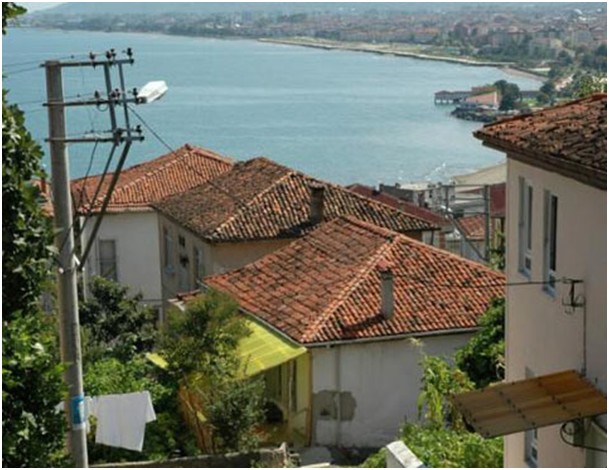
Delikkaya Kaya Mezarları Delikkaya Rock Tombs

Tozkoparan Kaya Mezarları Tozkoparan Rock Tombs
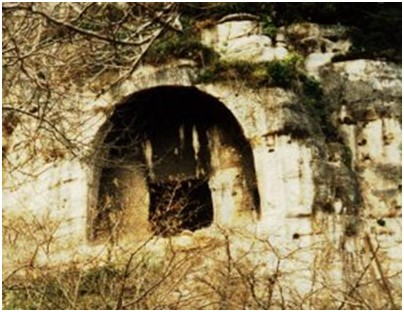
Ünye Kalesi( unyeCastle)
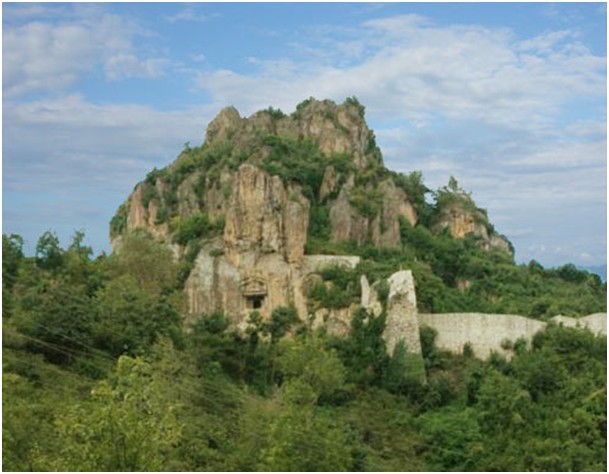
Gölköy Kalesi (Gölköy Castle)
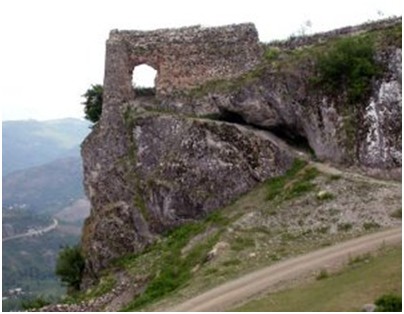
Bolaman Kalesi (bolamancastle)
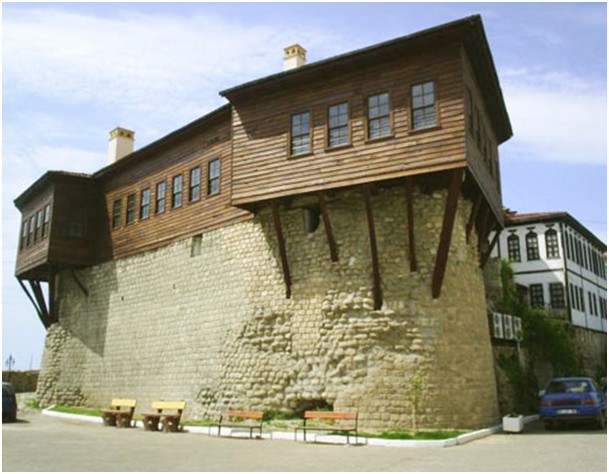
Taşbaşı Kültür Merkezi
(Tasbasi Cultural Center)
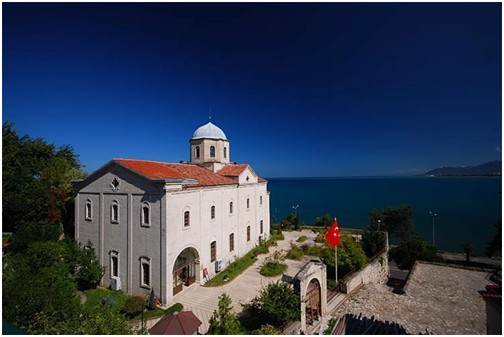
jason church
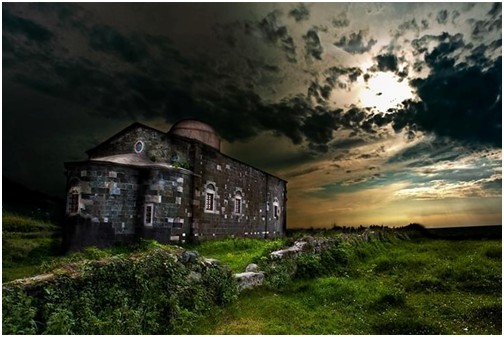
PaşaoğluKonağıveEtnografyaMüzesi (Paşaoğlu Mansion and Ethnography Museum)
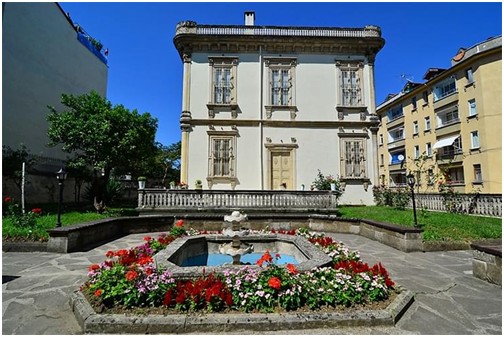
Osman Paşa Şadırvanı (Osman Pasha Fountain)
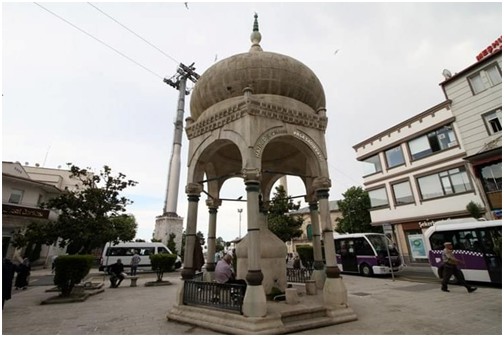
Published: Oct 31, 2021
Latest Revision: Oct 31, 2021
Ourboox Unique Identifier: OB-1219055
Copyright © 2021








